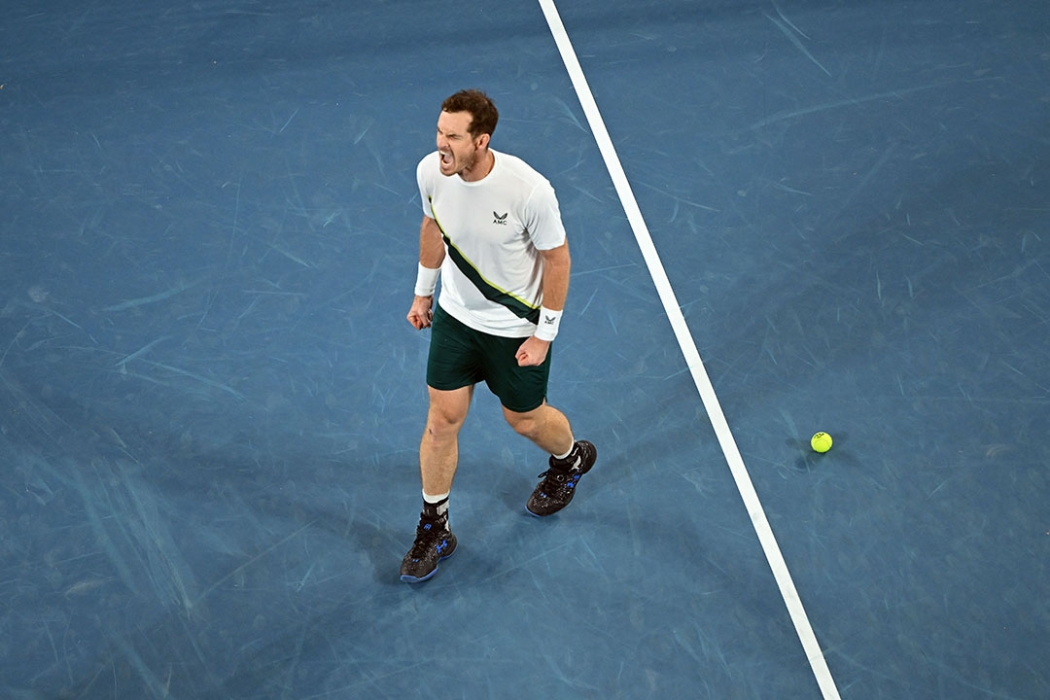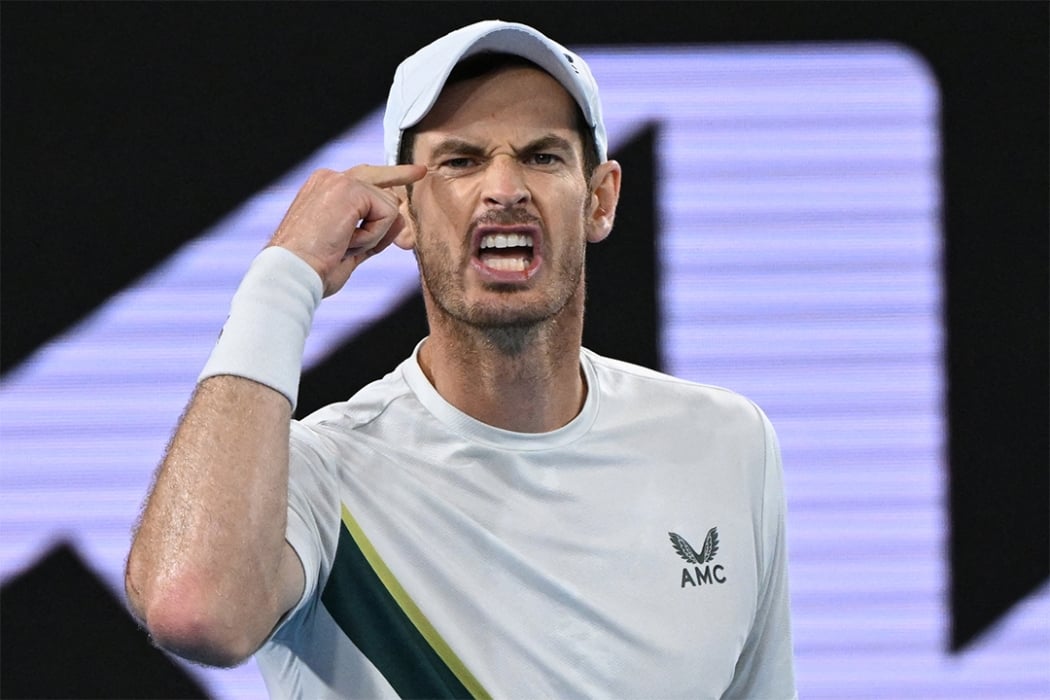Sir Andy Murray, who single-handedly resurrected Britain as a force in world tennis, has zipped up the kit at age 37 after soldiering on with a resurfaced hip and gritted teeth for the past five years.
Murray drew the curtain on his glittering career at the Paris 2024 Olympics, an appropriate setting given he remains the only player to win two singles gold medals since tennis returned to the Summer Games in 1988.
Alongside fellow Brit Dan Evans, Murray's final match was a men's doubles quarterfinal loss to Americans Taylor Fritz and Tommy Paul. On X, formerly known as Twitter, he signed off with a bio update and another dash of the dry humour that contributed to his enduring appeal.
Never even liked tennis anyway.
— Andy Murray (@andy_murray) August 1, 2024
Often slighted as the Ringo of the Tennis Fab Four, alongside Roger Federer, Rafael Nadal and childhood nemesis Novak Djokovic, Murray’s three Grand Slam titles and 41 weeks at No.1 are dwarfed by his rivals’ 20-plus majors each, and years atop the rankings. But his career is arguably no less epic.
The only Brit to rank No.1 in singles in the professional era, it was Glasgow-born Murray who returned Britain to tennis relevance. Britain’s Scot talent exceeded the wildest hopes of his compatriots in breaking Britain’s seven-decade drought in men’s majors (at the 2012 US Open), Wimbledon (2013 and 2016) and Davis Cup (2015).
Fred Perry, the last Briton to take home those prizes, played in long pants with wood racquets.
Though he finished with losing records against the Big Three, Murray defeated them all in Grand Slams and Masters events. He was, for an entire decade, the only man to beat Djokovic in a Wimbledon final (2013), until Carlos Alcaraz joined him in 2023 while he watched on. At his home London Olympics, he crushed Federer in the Swiss star’s only shot at a singles gold medal, barely a month after losing the Wimbledon final to him on the same court.

At the Rio Games, Murray upstaged his celebrated rivals as the only two-time Olympic champion. He ended his banner 2016 by defeating Djokovic in the last match of the year for the ATP World title and the season No.1 ranking.
A survivor of the Dunblane school massacre as an eight-year-old and the divorce of his parents soon after, Murray’s tough childhood was good preparation for his marquee scraps with the greatest major winners in the game’s history.
RELATED: After 20 years of memories, Angelique Kerber waves goodbye
Like the flinty Perry, he was an outsider to the world of manicured courts and strawberries-and-cream. Murray’s fascination with boxing is reflected in his tennis – more elemental fight than performance. His formative tennis influences were his mother Judy, a one-time head coach of Scotland, and his ready-made rival, older brother Jamie (a No.1 in doubles with whom he would win the Davis Cup).
Murray was also propelled by a thirst for big moments – "I’ve never felt nervous in front of big crowds in big stadiums," he once declared – and a ferocious work ethic.
He would need every bit of hard graft to compete for the glittering prizes in the most top-heavy era in men’s tennis.

After bitter losses in his first four Grand Slam finals, Murray ingeniously teamed with fellow 0-4 loser Ivan Lendl for his breakthrough at the 2012 US Open, toppling Djokovic in a marathon final to end Perry’s 76-year reign as Britain’s last male major winner.
It was more than his success-starved country dreamed when Murray made his Wimbledon 2005 debut, a wild-haired, intense stripling fighting out of his weight division to reach the third round, and already attracting the likes of Sean Connery and Alex Ferguson to his matches. (Alas not Perry, who died in the 1990s, and would have loved the fiery young Scot.)
Even Murray’s losing efforts had a heroic quality, nowhere more than in Australia. The only player to come away empty-handed from five Australian Open finals (one against Federer and four versus Djokovic), he also lost a gruelling four-hour, 50-minute semifinal to the Serb in 2012.
At Melbourne Park in 2019, Murray tearfully all-but announced the end of his playing career as he faced a hip replacement to end his daily pain and ensure quality of life. He lost to Roberto Bautista-Agut in five defiant sets, his agonised cries an audible reminder he was fighting for his tennis life.
The touching on-court farewell, with effusive tributes from fellow players, was a gift of sorts, allowing Murray to leave the game in peace, in no doubt of the respect and affection in which he was held.
But it wasn’t the end.
Doubles No.1 Bob Bryan reached out and convinced Murray to undergo hip-resurfacing, rather than replacement, which the American had undergone and successfully returned to the game, albeit in doubles.
An unlikely return
Nobody expected to see Murray back on court just four months after his hip-resurfacing surgery, winning his first event, the Queen’s doubles, with Feliciano Lopez in June. By October he had his first singles title since early 2017 – the European Open in Antwerp, over fellow rehabber Stan Wawrinka. A string of top-10 wins saw him return to the top 50 in 2022.
Then there was his magnificent campaign at Australian Open 2023.
Murray saved a match point to stun 13th seed Matteo Berrettini – his first victory over a top-20 opponent at a major in almost six years – and then recovered from the most precarious of positions to overcome Thanasi Kokkinakis in a match finishing in the early hours of the following morning and a result which saw the record books re-written.
He soldiered on for another 18 months, but wins became fewer and further between as his embattled body became harder to manage.
Murray’s second tennis life has given hope that a hip injury need not be career-ending, as it was less than 20 years ago for former No.1 Gustavo Kuerten.
Like his superstar predecessor Fred Perry, whose eponymous label he wore as a youngster, Murray could be prickly but was never less than authentic and always his own man. As a teenager, he hounded his mother Judy (his coach until age 12) to let him relocate to Spain. From ages 15-17 he was at the Casal-Sanchez academy in Barcelona where, he recently reflected as a parent, living conditions were far from salubrious. His older brother Jamie stayed in Scotland.
Another sign of his independent spirit was parting ways at age 20 with Brad Gilbert, the celebrated coach of No.1s Andre Agassi and Andy Roddick, although the LTA was picking up the coaching tab. Murray preferred to pick and pay his own team.
He made headlines with the inspired choice of Ivan Lendl in late 2011. Lendl had no known coaching experience and had been away from the game for years when Murray put out the SOS, having lost four major finals as Lendl himself had done in the 1980s. (They were also both drilled in the game by ambitious mothers with a rabid love for tennis.) Within a year, Murray was a Wimbledon finalist, Olympic and US champion and world No.3.

Murray-Lendl was the first of the all-star pairings, emulated by Djokovic (with Boris Becker), Federer (with Stefan Edberg), Marin Cilic (with Goran Ivanisevic) and Kei Nishikori (with Michael Chang).
An even bolder move was appointing former WTA No.1 Amelie Mauresmo as coach. The blame and vitriol directed at Mauresmo for Murray’s lean 2014 season (on his return from major back surgery) turned Murray into an unexpected champion for gender equality.
In a 2015 piece for French sports daily L’Equipe, Murray attacked the hypocrisy and double standards borne by women coaches. "Have I become a feminist?" he asked. "Well, if being a feminist is about fighting so that a woman is treated like a man, then yes, I have."
Whether it was pay equity, Scottish independence or drugs in sport, Murray was the most outspoken of the Big Four.

A tactically sharp counterpuncher with a multi-weapon backhand, Murray never lost his small-man smarts even as he grew into the biggest of the Big Four – at 191cm – with the heftiest serve. His style drew mild critiques that he was a touch reactive in the biggest matches against the best.
What was never in question was Murray’s professionalism, competitive grit and appetite for hard work. The biggest testament to his doggedness: Murray went a record seven years between first reaching No.2 and stepping up to No.1 at age 29.
The once-described dour Scot exceeded the wildest hopes of his compatriots and even, begrudgingly, won them over. Murray long ago won over the rest of us. The arc of his career, from combative teenager (who complained that he was a Scot when he lost, a Brit when he won) to a knighthood from Prince Charles a mere dozen or so years later, has been a gritty and fascinating tennis fairytale to behold.
Murray has expressed interest in coaching (dream job: working with Emma Raducanu or Alcaraz) which happily suggests that the game hasn’t seen the last of him.
In the meantime, he will enjoy family time with wife Kim (daughter of veteran coach Nigel Sears) and four children.

